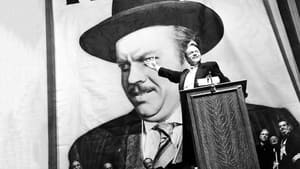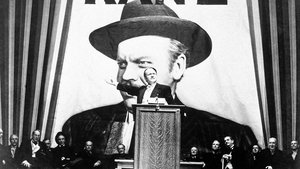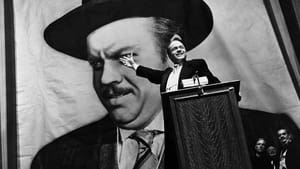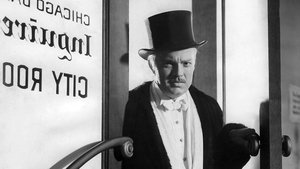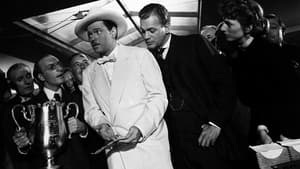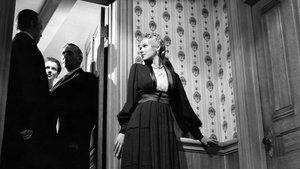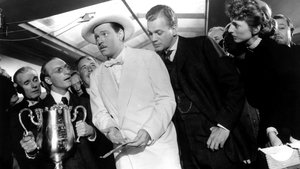Contact: [email protected]
Video Sources 0 Views

Synopsis
[ez-toc]




Introduction
In the vast realm of classic cinema, few films have left an indelible mark as profound as “Citizen Kane Colorized.” Directed and starred by the legendary Orson Welles, this 1941 masterpiece has long been celebrated for its groundbreaking narrative structure, innovative cinematography by Gregg Toland, and the brilliant screenplay crafted by J. Mankiewicz. However, in recent times, a new chapter has been added to the legacy of this iconic film – the controversial practice of colorization. In this article, we will delve into the world of “Untamed Citizen Kane Colorized 1941,” exploring the key players, the visual and narrative elements that defined the original, and the divisive debate surrounding the colorization of old films.
Read Media File Transfer Agreement: Terms and Conditions
Read FAQ
The Making of Citizen Kane Colorized
1. Orson Welles: Director and Actor
At the helm of “Citizen Kane Colorized” was the prodigious Orson Welles, whose innovative vision and directorial prowess played a pivotal role in shaping the film. Welles, not only the director but also the lead actor, brought the character of Charles Foster Kane to life with a magnetic and powerful performance. Welles’ influence permeated every frame, marking “Citizen Kane” as a testament to his genius in both behind and in front of the camera.
2. Gregg Toland: Innovations in Cinematography
The visual allure of “Citizen Kane Colorized” owes much to the revolutionary cinematography of Gregg Toland. Through the use of deep focus, Toland broke new ground, allowing audiences to absorb the intricate details of each scene simultaneously. The innovative techniques employed by Toland have since become pillars of cinematographic history, making “Citizen Kane Colorized” a timeless treasure in the world of old films.
3. J. Mankiewicz and the Art of Screenwriting
J. Mankiewicz, the unsung hero behind the screenplay, contributed significantly to the narrative depth of “Citizen Kane Colorized.” The intricate storytelling, filled with flashbacks and multiple perspectives, was a collaborative effort that elevated the film to unparalleled heights. Mankiewicz’s skillful penmanship intertwined seamlessly with Welles’ direction, creating a cinematic tapestry that transcends the boundaries of time.
Examining the Visual and Narrative Style of Citizen Kane Colorized
1. Utilization of Flashbacks in the Non-Linear Narrative
The non-linear narrative structure of “Citizen Kane Colorized” is a hallmark of its brilliance. Through strategically placed flashbacks, viewers are taken on a journey through the various facets of Charles Foster Kane’s enigmatic life. This narrative technique not only challenges conventional storytelling but also adds layers of complexity, prompting audiences to engage in an active and reflective viewing experience.
2. Visual Storytelling Through Cinematography and Design
Visual storytelling is a forte of “Citizen Kane Colorized,” with Toland’s cinematography and meticulous set design playing integral roles. Deep focus, symbolic imagery, and dramatic lighting elevate the film to a visual spectacle. Scenes like the iconic shot of the shattered snow globe encapsulate the power of visuals in conveying complex emotions and themes.
The Role of Sound and Music in Citizen Kane Colorized
Beyond its visual brilliance, the sound design and music of “Citizen Kane Colorized” contribute significantly to its overall impact. The haunting score, coupled with the resonant performances, including Welles’ portrayal of Kane, creates an immersive auditory experience. The film’s use of sound as a narrative tool enhances the emotional depth, making it a timeless audio-visual masterpiece.
The Legacy Continues: Reception, Influence, and Awards
1. Controversial Reception Upon Release
Despite its eventual recognition as one of the greatest films in history, “Citizen Kane Colorized” faced a controversial reception upon its initial release. Box office performance struggled against critical acclaim, highlighting the divide between popular appeal and the discerning eye of cinephiles.
2. Recognition through Awards and Accolades
Over time, “Citizen Kane” garnered the recognition it deserved, earning major awards and accolades. Its significance in the film industry was solidified, influencing future generations of filmmakers and becoming a touchstone for cinematic excellence.
Exploring Themes of Power, Corruption, and Transience in Citizen Kane
Themes of power, corruption, and the transience of life resonate throughout “Citizen Kane.” Charles Foster Kane’s descent into self-destructive ambition serves as a cautionary tale, while the symbolism of “Rosebud” reflects on the fleeting nature of wealth and the inevitable passage of time.
1. The Destructive Nature of Obsessive Ambition
“Citizen Kane” unflinchingly explores the destructive consequences of obsessive ambition. Kane’s insatiable hunger for power corrupts not only himself but also the world around him, laying bare the pitfalls of unchecked authority.
2. Loss and Regret: A Reflection on Transience and Missed Opportunities
The theme of transience is poignantly expressed through the narrative arc of Kane’s life. Adopted at a young age, his yearning for identity and connection becomes a central motif. The symbolism of “Rosebud” encapsulates the film’s exploration of the inevitability of loss and the weight of regret.
Colorizing Citizen Kane: Artistic Enhancement or Historical Misrepresentation?
As we journey through the annals of film history, the question of colorization arises. “Untamed Citizen Kane Colorized 1941” introduces a controversial dimension to this cinematic masterpiece, raising questions about the preservation of the film’s original black and white aesthetic.
1. Preserving Cinematic Heritage Through Restoration Efforts
Film restoration, when done with respect for the original artistic intent, is a commendable effort. Preserving cinematic heritage ensures that future generations can appreciate the artistry and storytelling of old movies, allowing these films to transcend the limitations of their era.
2. The Debate Over Authenticity and Artistic Integrity
However, the colorization of old movies, especially revered classics like “Citizen Kane,” sparks a passionate debate. While some argue that colorization breathes new life into these films, others contend that it compromises the authenticity and artistic integrity of the original work. Filmmakers and scholars offer diverse perspectives on this ongoing discussion.
Experiencing Citizen Kane: To Colorize or Appreciate in Its Original Form?
The decision to experience “Citizen Kane” in its colorized version or its original black and white form becomes a subjective choice. The impact of color on mood and visual emphasis is undeniable, especially in scenes that rely on innovative lighting and dramatic editing style.
Conclusion
As we navigate the labyrinth of “Untamed Citizen Kane Colorized 1941,” it becomes evident that the debate over colorization extends beyond mere aesthetics. It encompasses questions of authenticity, artistic integrity, and the delicate balance between preserving history and allowing cinematic art to evolve. Whether one chooses to appreciate the original black and white version or embraces the colorized rendition, both offer unique perspectives on a cinematic masterpiece. Let us, like Robert Wise and the Mercury Theatre, appreciate the diversity of experiences that “Citizen Kane” continues to offer, bridging the gap between old films and the ever-evolving landscape of cinema.
